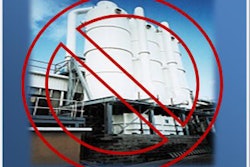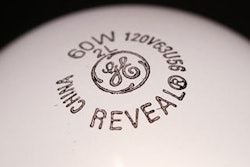This is part two of a two-part piece. Part one can be found here.
Automation & Regulation — Managing Energy Use
In pharmaceutical manufacturing, maintaining the proper environment is critical to the success of the process — product quality and regulatory compliance depends upon it. It has often been found that, although environmental conditions are being maintained and there are no complaints, it is at the expense of significant wasted energy. Real auditing examples regularly include basic problems, such as heating and cooling overlapping, humidity controls set much lower than product tolerances require and no setback to relax conditions for non-production times.
In some cases, simple retuning of the control loop and a review of use is all that is necessary. In other cases, it is just basic maintenance. As an example, during a walk-through audit, an air handling unit heating valve found to be stuck open was calculated to be wasting $10,000 a year — yet no issues had been signaled to the facilities staff regarding these conditions. The replacement cost of the valve was less than $1,500, and as a result of this finding, the plant changed out 25 similar valves to mitigate future issues.
With most process air systems being 100 percent fresh air, the air flow rates in HVAC systems have a huge impact on energy costs — all the air needs to be filtered, treated and conditioned to the correct temperature and humidity. However, in many systems, it is found that actual flow rates are much higher than design, and sometimes even the design flow rates are higher than needed due to change of use.
Control of motor speed is the most effective way to manage air flow rates using variable speed drives (VSD), which are easy to retrofit. It is important to ensure that VSDs are effectively controlled either directly at the VSD or through the building management systems (BMS), which are straightforward applications enabling retrofits of VSDs to be achieved with minimal disruption. Typically pressure sensors are used to control flow, enabling automated changes to be made according to requirements — full design flow rate during production and relaxed levels for non-production periods.
Pressure sensors fitted across a filter can modify fan speed to adjust for the degradation of the filter. Control systems can be set to provide a maintenance alert when it becomes economic to change the filter and so reduce the fan power. Consequently, maintenance can be scheduled at the optimum time.
In a similar manner, VSDs provide significant energy savings in pumping systems by varying flow rates according to system demand instead of a fixed volume. Common applications include chilled and hot water distribution to air handling units and cooling towers. Occupancy monitoring means that simple presence detectors, CO2 monitors, and access control systems can be used to control lighting and HVAC systems dependent upon changing needs. Power factor and power quality correction is often overlooked and can provide simple measures to reduce energy losses and avoid power supply penalties.
Monitoring, Maintenance & Improvement — How to Ensure Benefits Are Sustained
Automation can ensure that systems are controlled reliably and in an energy efficient way, avoiding the risk of operator error or omission. However, even with such automation, audit experience has regularly found control systems that are bypassed, perhaps sometimes for good short-term operational reasons to maintain the process. However, these overrides can accumulate astonishing levels of energy waste.
Many companies have seen maintenance resources and budgets shrinking, so their focus tends to be on the elements critical to the process. Provided that conditions for production are maintained, the utility plant may be neglected. Even with regular maintenance checks (typically annually at best) equipment failures may go unnoticed for many months, or longer. Consider the heating valve mentioned previously; no indication of this was evident from monitoring environmental conditions and it was allowed to go on wasting energy continuously.
While robust automation, control, and monitoring can deliver savings of up to 30%, evidence suggests that 8 percent of these savings are lost annually without appropriate monitoring and maintenance (see Figure 2).

Figure 2
To ensure the continuing efficacy of all energy saving measures, be they passive or active measures, and of a facility’s energy systems in general, it is essential to actively monitor data from the plant, analyze and identify anomalies, and then act upon this information.
To truly understand the energy performance of a plant, it is essential to correlate the variables that affect its use. For Life Sciences HVAC systems, the weather impacts energy consumption by varying heating, cooling, and humidification requirements, as do plant utilization and occupancy.
A correlation of the appropriate variables in energy consumption results in a powerful model, used as a tool to witness what is actually happening. Modern monitoring and targeting software provides analysis tools to build such models. These tools may vary from simple regression analysis to multi-variable models with step functions. The step function is particularly suited to correlating energy usage with outside temperatures, changing in complement to external heating and cooling. This can reveal how well HVAC system controls are functioning and how effectively control dead bands have been set.
Establishing a model for the plant provides an independent baseline for future energy management actions. It provides a basis for targeting and monitoring energy savings at the facility department or production line level. This normalization allows accurate tracking of savings when making “before and after” comparisons of energy improvement implementations.
Most importantly, plant behavior can be monitored, and unwarranted increases in energy consumption can be identified - which might have otherwise gone unnoticed. Plant managers become well informed and armed to root out and rectify any problems which may arise, whether from plant failure, control settings, or operator-based behavior.
In addition to providing the control and automation functions for a facility’s plant, a BMS should provide the essential monitoring capability to identify issues and anomalies. Any competent system will provide comprehensive alarming functionality, but it does require a level of expertise to be able to interrogate the system on a routine basis to find deeper rooted problems and energy waste.
Even the best set up systems require a level of maintenance and regular review to ensure they remain optimally set for the ever changing circumstances of the modern pharmaceutical manufacturing facility. Pressure on support resources in facilities can mean that the necessary expert resource is not available, or sometimes that needed to deal with volumes of alarm messages.
One solution is to outsource this expertise and use a remote bureau to monitor energy management systems (EMS) and BMS. These can provide services on a 24/365 basis, such as:
- Energy reporting and dashboards.
- Alerting for anomalous consumption.
- Expert analysis and reporting on energy saving opportunities.
- BMS alarm handling and reporting, and even maintenance response services triggered by the alarms, without end user intervention.
- BMS optimization services.
An effective approach to monitoring will optimize the maintenance effort ensuring the limited resource is targeted at the most important areas.
Getting to the Next Level
Companies striving to excel in energy efficiency, whether for cost savings or meeting their environmental goals, will reach a point when significant capital expenditure (CapEx) is necessary. This could be for higher efficiency utility plant such as chillers or boilers, combined heat and power plant, or one of the many renewable energy generation technologies.
In order to maximize the effectiveness of this investment, it is essential to ensure that the plant is correctly selected for the demand profile in order to optimize its effectiveness and to not waste precious CapEx on unnecessary capacity. By following the active energy four-step process – energy audit and measure; fix the basics; optimize through automation and regulation; monitor, maintain and improve; a pharmaceutical site can ensure that energy demand has been optimized at a sustainable level and further investments will deliver the expected benefits.
By implementing an active energy efficiency approach, organizations can maximize the return on the capital expenditures (CapEx) necessary to excel in energy efficiency and improve the bottom line.
This is part two of a two-part piece. Part one can be found here. For more information, please visit www.schneider-electric.com.























